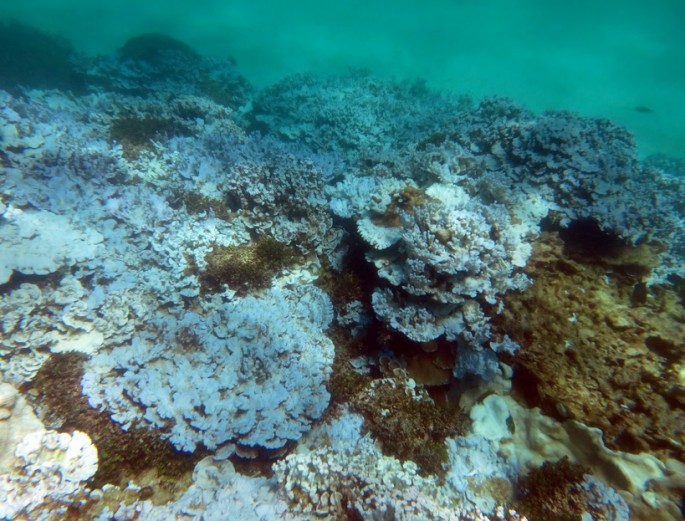Scientists reveal how the massive coral bleaching that is occurring in Hawaii right now, is now apparently expanding to the Caribbean region and could possibly continue to kill coral reefs around the world until 2016, forcing NOAA to declare this event as the third worldwide bleaching event in history.
According to Coral Reef Watch coordinator Mark Eakin from NOAA (National Oceanic and Atmospheric Administration), this widespread coral bleaching is caused by marine diseases due to warmer waters along with climate events like El Niño that pose as a dangerous threat to coral reefs on the planet.
Eakin says that huge areas of coral across the United States are already disappearing and also in international waters, making scientists concerned about this event that has been occurring for more than a year as prior model projections predicted it to last until 2016.
NOAA also reveals that by the end of 2015, almost 95 percent of coral reefs in the U.S. will have been exposed to bleaching conditions. Scientists also estimate that warming sea temperatures are resulting in the disappearance of 12,000 square miles of coral this year, especially impacting tropical regions in the U.S.
There are also numerous coral species that become vulnerable to disease when their ideal water temperatures fluctuate, exposing them to warmer waters for long periods of time. Coral bleaching occurs when corals experience stressful environmental conditions resulting in algae emissions from their tissues.
As a result of this, corals become white, where their vivid colors turn pale, due to the absence of these algae where the corals also lose their main food source, weakening them in the process.
Most corals recover from mild bleaching, however, long term or severe bleaching events can cause corals to die. When corals die, this could mean harming marine ecosystems, lessening shoreline protection for fish and other marine life.
According to Jennifer Koss of NOAA's Coral Reef Conservation Program, these bleaching events can be prevented by targeting human threats such as unsustainable fishing practices and land runoff pollution that adds more stress to the corals.



























